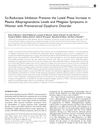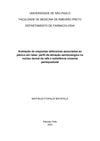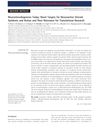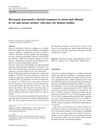Are There Temporal Subtypes of Premenstrual Dysphoric Disorder? Using Group-Based Trajectory Modeling to Identify Individual Differences in Symptom Change
April 2020
in “
Psychological Medicine
”

TLDR The study found three different timing patterns of symptoms in women with premenstrual dysphoric disorder.
The study investigated premenstrual dysphoric disorder (PMDD) in 74 women, using group-based trajectory modeling to identify different patterns of symptom change over time. It found three distinct subtypes: one with moderate symptoms only in the premenstrual week (65% of the sample), another with severe symptoms throughout the luteal phase (17.5%), and a third with severe premenstrual symptoms that resolved slowly post-menses (17.5%). These findings suggest that PMDD has temporal subtypes, which could lead to more personalized treatment approaches. The study also noted that the early-onset PMDD group might be overrepresented in research due to their positive response to certain treatments. The research was funded by the National Institute of Mental Health and a Brain and Behavior Research Foundation Young Investigator Grant, and ethical standards for human experimentation were followed.




